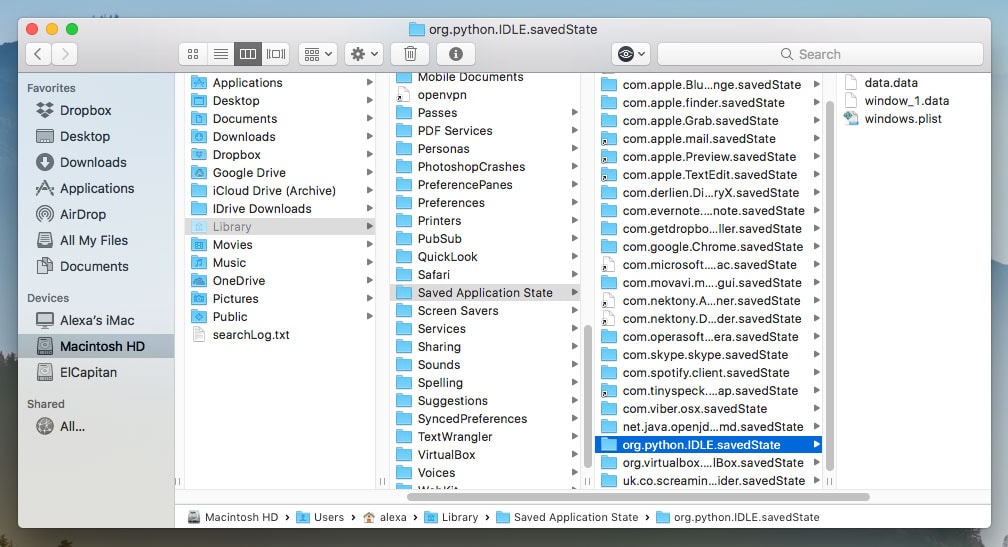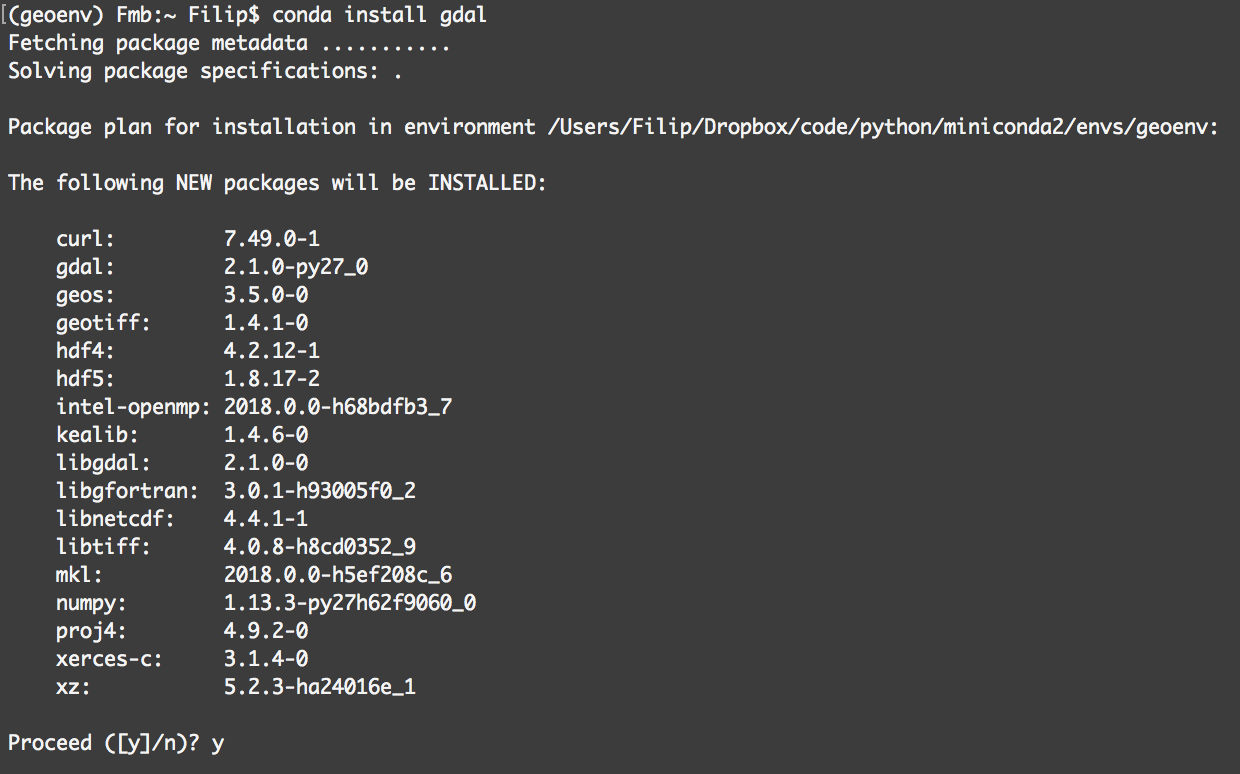There are different ways to install scikit-learn:
Conda is an open source package management system and environment management system that runs on Windows, macOS and Linux. Conda quickly installs, runs and updates packages and their dependencies. Conda easily creates, saves, loads and switches between environments on. Download an executable for Linux or Mac via Conda Binaries are available for MacOS or Linux via Conda. First, one must setup the Conda package manager on your system. Follow the instructions to install Miniconda, then create a conda environment (named my-lammps-env. Download the latest version for Mac Download Orange 3.27.1 Bundle Orange3-3.27.1-Python3.7.6.dmg. In and ready to use. If you are using python provided by Anaconda distribution, you are almost ready to go. Add conda-forge to the list of channels you can install packages from. Conda config -add channels conda-forge. By default, Chrome selects the downloading page of your system. In this tutorial, installation is done for Mac. If you run on Windows or Linux, download Anaconda 5.1 for Windows installer or Anaconda 5.1 for Linux installer. I recommend you to install all packages and dependencies with the conda command in the terminal. File Date Download; python-2.7.15-macosx10.9.pkg: 2018-05-01: 22.7 MB: python-2.7.12-macosx10.6.pkg: 2016-06-25: 21.3 MB: python-2.7.11-macosx10.6.pkg: 2015-12-05.
Install the latest official release. Thisis the best approach for most users. It will provide a stable versionand pre-built packages are available for most platforms.
Install the version of scikit-learn provided by youroperating system or Python distribution.This is a quick option for those who have operating systems or Pythondistributions that distribute scikit-learn.It might not provide the latest release version.
Building the package from source. This is best for users who want thelatest-and-greatest features and aren’t afraid of runningbrand-new code. This is also needed for users who wish to contribute to theproject.
Installing the latest release¶
Operating SystemPackager
brew install python) or by manually installing the package from https://www.python.org.Install python3 and python3-pip using the package manager of the Linux Distribution.Install conda (no administrator permission required).Then run:
In order to check your installation you can use
Note that in order to avoid potential conflicts with other packages it isstrongly recommended to use a virtual environment, e.g. python3 virtualenv(see python3 virtualenv documentation) or conda environments.
Using an isolated environment makes possible to install a specific version ofscikit-learn and its dependencies independently of any previously installedPython packages.In particular under Linux is it discouraged to install pip packages alongsidethe packages managed by the package manager of the distribution(apt, dnf, pacman…).
Note that you should always remember to activate the environment of your choiceprior to running any Python command whenever you start a new terminal session.
If you have not installed NumPy or SciPy yet, you can also install these usingconda or pip. When using pip, please ensure that binary wheels are used,and NumPy and SciPy are not recompiled from source, which can happen when usingparticular configurations of operating system and hardware (such as Linux ona Raspberry Pi).
If you must install scikit-learn and its dependencies with pip, you can installit as scikit-learn[alldeps].
Scikit-learn plotting capabilities (i.e., functions start with “plot_”and classes end with “Display”) require Matplotlib (>= 2.1.1). For running theexamples Matplotlib >= 2.1.1 is required. A few examples requirescikit-image >= 0.13, a few examples require pandas >= 0.18.0, some examplesrequire seaborn >= 0.9.0.
Warning
Mac Conda Command Not Found

Scikit-learn 0.20 was the last version to support Python 2.7 and Python 3.4.Scikit-learn 0.21 supported Python 3.5-3.7.Scikit-learn 0.22 supported Python 3.5-3.8.Scikit-learn now requires Python 3.6 or newer.
Note
For installing on PyPy, PyPy3-v5.10+, Numpy 1.14.0+, and scipy 1.1.0+are required.
Third party distributions of scikit-learn¶
Some third-party distributions provide versions ofscikit-learn integrated with their package-management systems.
These can make installation and upgrading much easier for users sincethe integration includes the ability to automatically installdependencies (numpy, scipy) that scikit-learn requires.
The following is an incomplete list of OS and python distributionsthat provide their own version of scikit-learn.
Arch Linux¶
Arch Linux’s package is provided through the official repositories aspython-scikit-learn for Python.It can be installed by typing the following command:
Debian/Ubuntu¶
The Debian/Ubuntu package is splitted in three different packages calledpython3-sklearn (python modules), python3-sklearn-lib (low-levelimplementations and bindings), python3-sklearn-doc (documentation).Only the Python 3 version is available in the Debian Buster (the more recentDebian distribution).Packages can be installed using apt-get:

Fedora¶
The Fedora package is called python3-scikit-learn for the python 3 version,the only one available in Fedora30.It can be installed using dnf:

NetBSD¶
scikit-learn is available via pkgsrc-wip:
MacPorts for Mac OSX¶
The MacPorts package is named py<XY>-scikits-learn,where XY denotes the Python version.It can be installed by typing the followingcommand:
Canopy and Anaconda for all supported platforms¶
Canopy and Anaconda both ship a recentversion of scikit-learn, in addition to a large set of scientific pythonlibrary for Windows, Mac OSX and Linux.
Conda Mac Download Windows 10
Anaconda offers scikit-learn as part of its free distribution.
Intel conda channel¶
Intel maintains a dedicated conda channel that ships scikit-learn:
This version of scikit-learn comes with alternative solvers for some commonestimators. Those solvers come from the DAAL C++ library and are optimized formulti-core Intel CPUs.
Note that those solvers are not enabled by default, please refer to thedaal4py documentationfor more details.
Compatibility with the standard scikit-learn solvers is checked by running thefull scikit-learn test suite via automated continuous integration as reportedon https://github.com/IntelPython/daal4py.
WinPython for Windows¶
The WinPython project distributesscikit-learn as an additional plugin.
Troubleshooting¶
Error caused by file path length limit on Windows¶
It can happen that pip fails to install packages when reaching the default pathsize limit of Windows if Python is installed in a nested location such as theAppData folder structure under the user home directory, for instance:
In this case it is possible to lift that limit in the Windows registry byusing the regedit tool:
Type “regedit” in the Windows start menu to launch
regedit.Go to the
ComputerHKEY_LOCAL_MACHINESYSTEMCurrentControlSetControlFileSystemkey.Edit the value of the
LongPathsEnabledproperty of that key and setit to 1.Reinstall scikit-learn (ignoring the previous broken installation):
